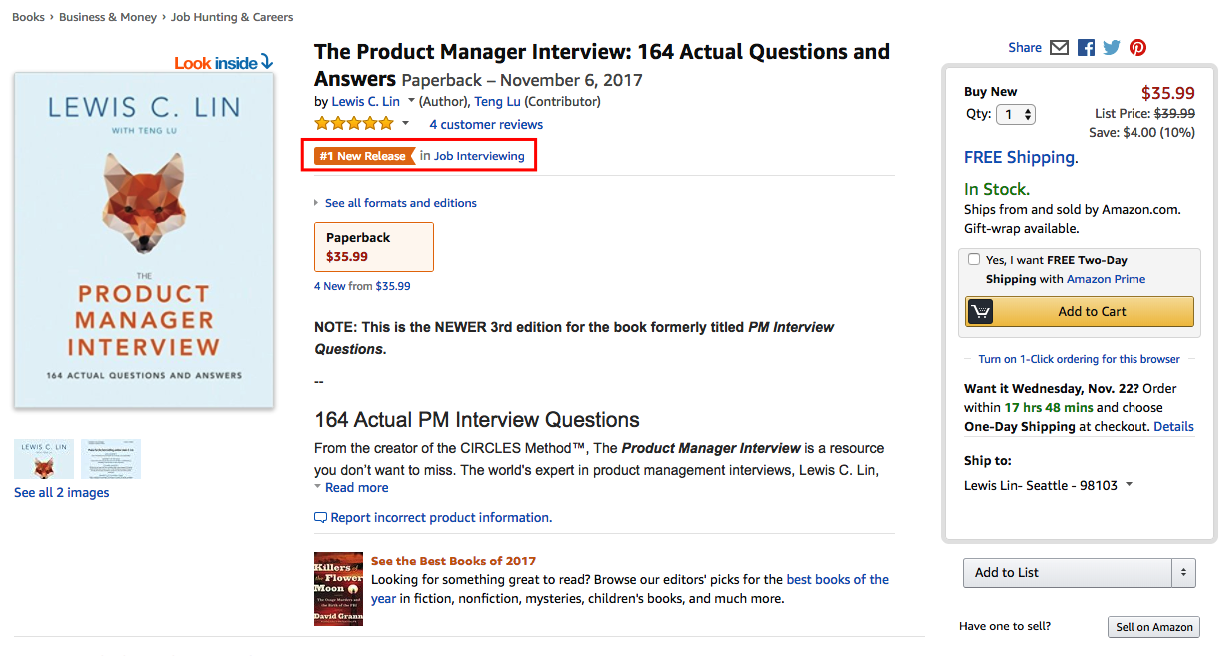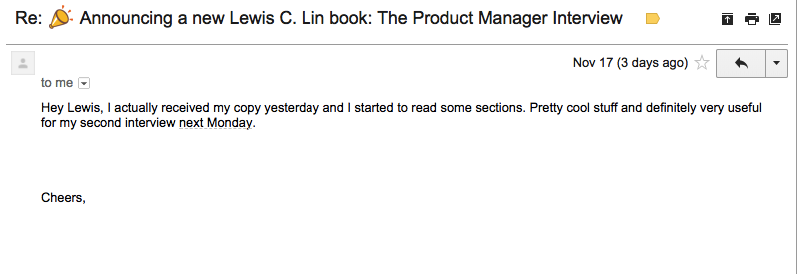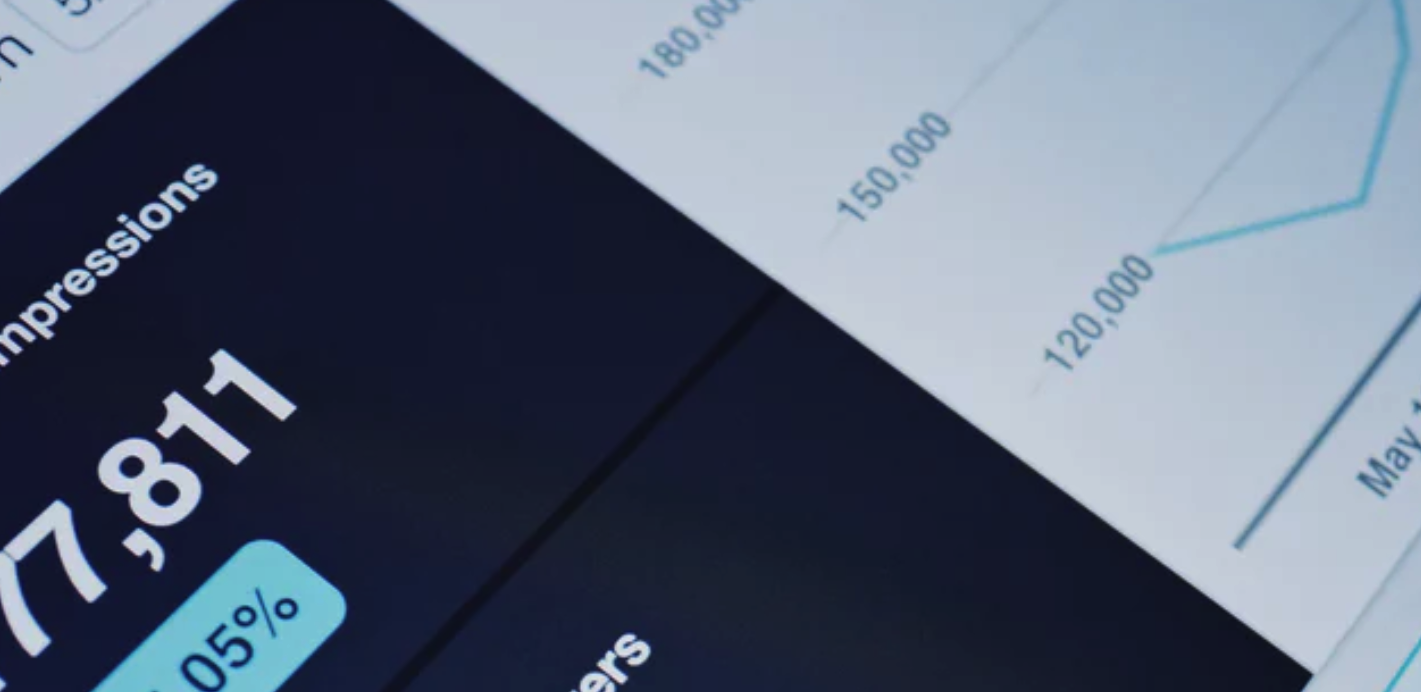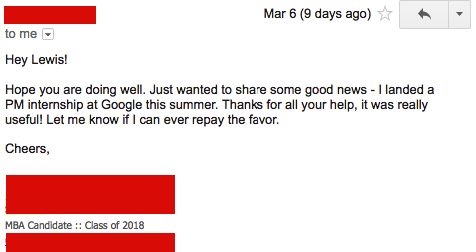What are the most important Gmail metrics?
Submit your answers in the comments and receive feedback.
product manager interview

What are the most important Gmail metrics?
Submit your answers in the comments and receive feedback.
I've made many of my product manager interview resources available for free on the web.
There's one item that's coveted more than anything else: my Google Spreadsheet that recommends topics to study and exercises to do for:
It also includes links to my two company specific guides: a 30-day study guide for Google PM interviews and a 30-day study guide for Amazon PM interviews. (I do have a 30-day study guide for Facebook PM interviews, in my book The Product Manager interview.)
Best of luck with your PM interviews,
Lewis C. Lin
After talking to several product managers (PMs) and understanding the interview process, it was evident to me that getting the right job wasn’t going to be easy. Several aspects of the process were a mystery to me (and some still are!). This post highlights my learnings from preparing for interviews and accepting the position of a Product Manager - New Grad at Yelp.

I bought all the essential reading material - The Product Manager Interview, Interview Math and Decode and Conquer (all are authored by Lewis Lin).
I started looking into the companies I was interested in. I researched the mission, values, skills the company looked for, whether I would be a good culture fit, product growth and whether their mission resonated with me.
In all, I scheduled more than 100 mock interviews through the Slack community during my internship and full-time job search. The interviews usually lasted for 1 hour and 15 minutes comprising of two 30 minute long interviews where each individual took turns to interview the other followed by 15 minutes of feedback. I usually found questions to ask on Glassdoor. I tried to make it a two-way interaction by asking questions, taking pauses and often checking if they were following.
To my surprise, I learned a great deal by interviewing other people. I found it helpful to take note of what I liked about the interviewee and tried to incorporate those strategies into my own. This helped me develop a keen eye for product design, come up with creative ideas and pay attention to detail.
I suggest that you try to do at least 5 mocks for each category of questions (elaborated below). This practice will help you think on your feet, build muscle memory and tackle unexpected follow-ups in the interview. Don’t hesitate to do mock interviews even when you feel less confident about your preparation. I cannot emphasize enough the utility of mock interviews. This will allow you to identify what truly differentiates you from other candidates. To find partners for mock interviews, I signed up for the PMInterview Slack team and reached out to friends and school alumni.

Product design is one of the most important PM interview question categories. I started by preparing my own framework - a modified version of the popular CIRCLES method. You should stick to what works best for you.

In order to empathize with the user in question, I define a good mix of user personas in the beginning and then describe their demographics, values, and characteristics. I think of people I already know while outlining the personas. Several resources on building user personas are available online. I particularly like the IDEO ones.
The personas need to be complemented with unique and creative ideas. I read technology blogs like Stratechery, subscribe to newsletters like Springwise and listen to podcasts like Exponent to help me with that. Being aware of market trends and competing products in the market made the task of coming up with good ideas easier. I also practiced wire-framing solutions with designer friends of mine. This makes it easier to explain to the interviewer what the solution looks like and ensure that both of you have the same idea in mind.
I picked five products I liked and five I didn’t. For each product, I brainstormed the user personas, what utility it serves, its shortcomings and how it can be improved. Before interviewing with a particular company, focus on its products along with a few others.
I applied this process to different classes of products: apps (such as LinkedIn and Google Trips), services (such as supermarket checkout) and physical products (such as wearables).
After identifying qualities that the company cares about, I prepared a spreadsheet with those qualities along the rows and past experiences along the columns. I referred to the company’s website and Amazon leadership principles to fill the rows. Then, I filled the cells with a few stories from my past experiences highlighting those qualities, in the STAR (Situation, Task, Action, Result) format.

I practiced my pitch in front of the mirror and with my friends. I wasn’t able to complete the spreadsheet in one iteration. Talking to friends and colleagues helped in discovering qualities and remembering incidents I hadn’t thought of. Stories should be authentic otherwise the delivery makes it evident that they are either rehearsed or made up. Additionally, I kept a 30-second and a 2-minute ‘About Me’ pitch handy.
Usually, one of the interviews is dedicated to evaluating the candidate’s analytical ability. It is essential to have your metrics game on point. My strategy is to define the key actions that the user needs to perform (such as upload a picture or save an article) and then describe how this can be best measured using the available data. In order to focus on the primary metric, I eliminate all that aren’t actionable.
Being prepared for statistical questions about A/B testing and usage experiments helped me tackle the rare curveball. I read Lean Analytics (by Alistair Croll and Benjamin Yoskovitz) and PM Interview Questions to have a strong understanding of product metrics. I also spent time on SQL for questions pertaining to the actual computation.
I practiced for these by breaking the problem into smaller problems and solving for each subpart separately to come up with the overall solution. I developed a framework to fall back on for problem-solving questions. The examples in the book The Product Manager Interview are a good representation of what to expect.
Be prepared for typical technical questions such as ‘What happens when you type google.com in the browser?’ and ‘How would you explain machine learning to a 5-year-old?’. You could also be asked system design questions like ‘How would you go about designing Twitter?’ and ‘How would you design a Google search type-ahead?’. I also studied how scalability is ensured by different companies on highscalability.com and practiced questions on Gainlo and Interview Bit. For coding questions, I studied Leetcode and did a few mock interviews on Pramp.
The most critical piece of advice I got was from a friend of mine who told me to not just be prepared but to be over-prepared. I have now realized that is what gives you confidence during the interview. As Louis Pasteur said ‘luck favors the prepared mind’!
Thanks for reading! If you have any feedback, feel free to comment below or reach out on LinkedIn. Thank you, Megha Arora, Aryan Chhabria, Abhivyakti Saxena and Raghav Sethi for your invaluable insights!
Originally published on @rohankatyal.

Rohan Katyal is an incoming product manager at Yelp in the data products team. Presently, he is a human-computer interaction graduate student at Georgia Institute of Technology. Previously, Rohan worked as a product management intern at Yahoo (now Oath), as a research associate at INRIA Sophia Antipolis Méditerranée and as a mentor at Google Summer of Code. He holds a degree in computer science from IIIT Delhi.

My newest release, The Product Manager Interview, is out!
I'm happy to announce that sales have absolutely exceeded all of my expectations. Two weeks after it's release, it continues to hold the Amazon's #1 spot for new release in job interviewing.
And readers are finally getting the book in their hands. Here's a nice note that one reader sent about his experience with the new book.

With the winter break around the corner, I can't think of a better book for those who are getting ready for product management interviews...either for now or for interviews in the new year.
Conquer those interviews,
Lewis C. Lin

Sometimes referred to as AARM Metrics™, the AARM Method™ is an analytical framework that defines the metrics for a product. This four letter acronym refers to acquisition, activation, retention, and monetization:
For more information and examples on how to use the AARM Method™ refer to Lewis C. Lin's book: Decode and Conquer.

I'm happy to announce another win for the product manager interview community: a job offer with Amazon's AWS team!
If you're looking to the join the PM interview community, you can find details here.
Lastly, you mind find these two remaining Amazon product management resources to be helpful:
I'm excited to announce that our product manager mock interview practice community now has an archive!
And as always, if you haven't joined already, sign up for the Product Manager Interview Community.

The product management interview community is growing and the hard work is paying off!
Two of our members nailed Google offers. Join, if you haven't already, and try to get on our 2017 Product Management Interview Challenge leaderboard!
